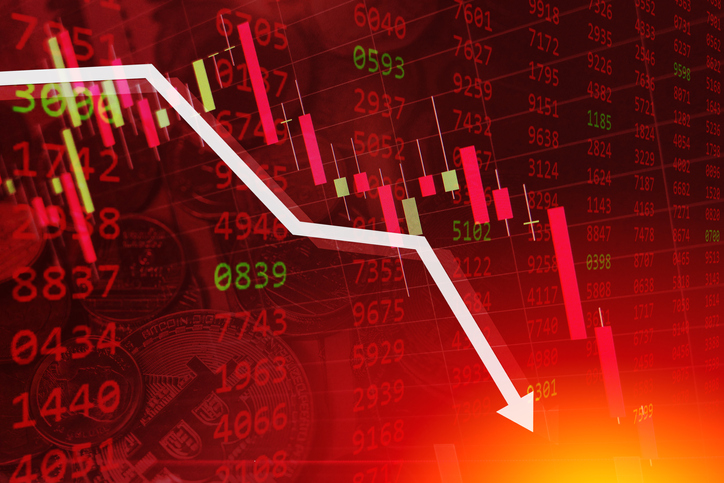
Persisting concerns surrounding China’s economic stability and the potential risks associated with higher rates due to elevated inflation have cast a looming shadow over the markets. Both the S&P 500 and Nasdaq Composite are positioned for their third consecutive week of decline, marking a trend not seen since February. Similarly, the Dow is heading towards its most challenging week since March, with a decline of 2.29% recorded by Thursday.
Adding to the prevailing unease, the Dow Transports and Russell 2000 indexes are grappling with their most arduous weeks since March. Of significant note, the Dow’s trajectory took a substantial turn as it closed below the 50-day moving average, a development that hasn’t materialized since June 1. This outcome typically serves as a bearish signal for investors. Within the Dow, comprised of 30 stocks, a noteworthy drop of 290.91 points occurred, equating to a 0.84% decrease. Similarly, the S&P 500 witnessed a 0.77% decline, while the Nasdaq Composite experienced a 1.17% slide on Thursday.
A key factor magnifying market concerns is the 10-year U.S. Treasury yield, surging to its highest level since October 2022 on Thursday. This upswing followed the release of the July meeting minutes by the Federal Reserve, hinting at the possibility of further interest rate hikes due to lingering inflation concerns. The trajectory of these interest rates is triggering apprehension among investors, particularly due to the convergence of multiple global events.
Opinions regarding the escalating rates are varied. Some contend that the current rate increase lacks compelling justifications, culminating in a confluence of factors on a global scale. The situation is nearing levels not observed in quite some time. Furthermore, if the current trajectory of these yields remains unchanged, the global economy could potentially encounter weighty repercussions.
China’s economic challenges are further exacerbated by the actions of Evergrande Group, a property conglomerate grappling with substantial debts. Recently, Evergrande filed for Chapter 15 bankruptcy protection in a U.S. court. This decision follows the company’s default in 2021 and its subsequent announcement of an offshore debt restructuring plan in March. The suspension of trading for Evergrande shares since March 2022 underscores the severity of the predicament the company faces.
The elevated risk of inflation, both domestically and globally, is casting a pall over the stock market, fueling uncertainty and volatility. Inflation, characterized by rising prices of goods and services, can erode consumer purchasing power, potentially hampering economic growth and impacting corporate profitability. Additionally, inflationary pressures can prompt central banks to raise interest rates, exerting further influence on stock prices. These higher rates, while lagging, have the potential to dampen the economy, as witnessed in the past two years. The delayed impact arises from the gradual realization of heightened service costs. These challenges are manifesting in defaults, such as the case of SVB, and are further evidenced by the ongoing issues experienced by Evergrande. This concern is expected to linger until the market gains greater clarity.
In this uncertain climate, global dynamics are wielding substantial influence, necessitating astute vigilance and strategic decision-making by investors. The stock market’s aversion to uncertainty is palpable, contributing to the prevailing negative sentiment. While volatility persists, there is a conceivable end to this turbulence, even though the timing remains uncertain. As Fiscal Investors, our primary focus remains steadfastly on the long term. Market fluctuations are inherent, and within this context, selecting value stocks with substantial dividends is a prudent approach to navigate the existing challenges. Numerous stocks offer appealing dividends while demonstrating resilience amidst market fluctuations. Despite the allure of dynamic growth stocks, the uphill battle against elevated interest rates remains a persistent challenge.

Be First to Comment